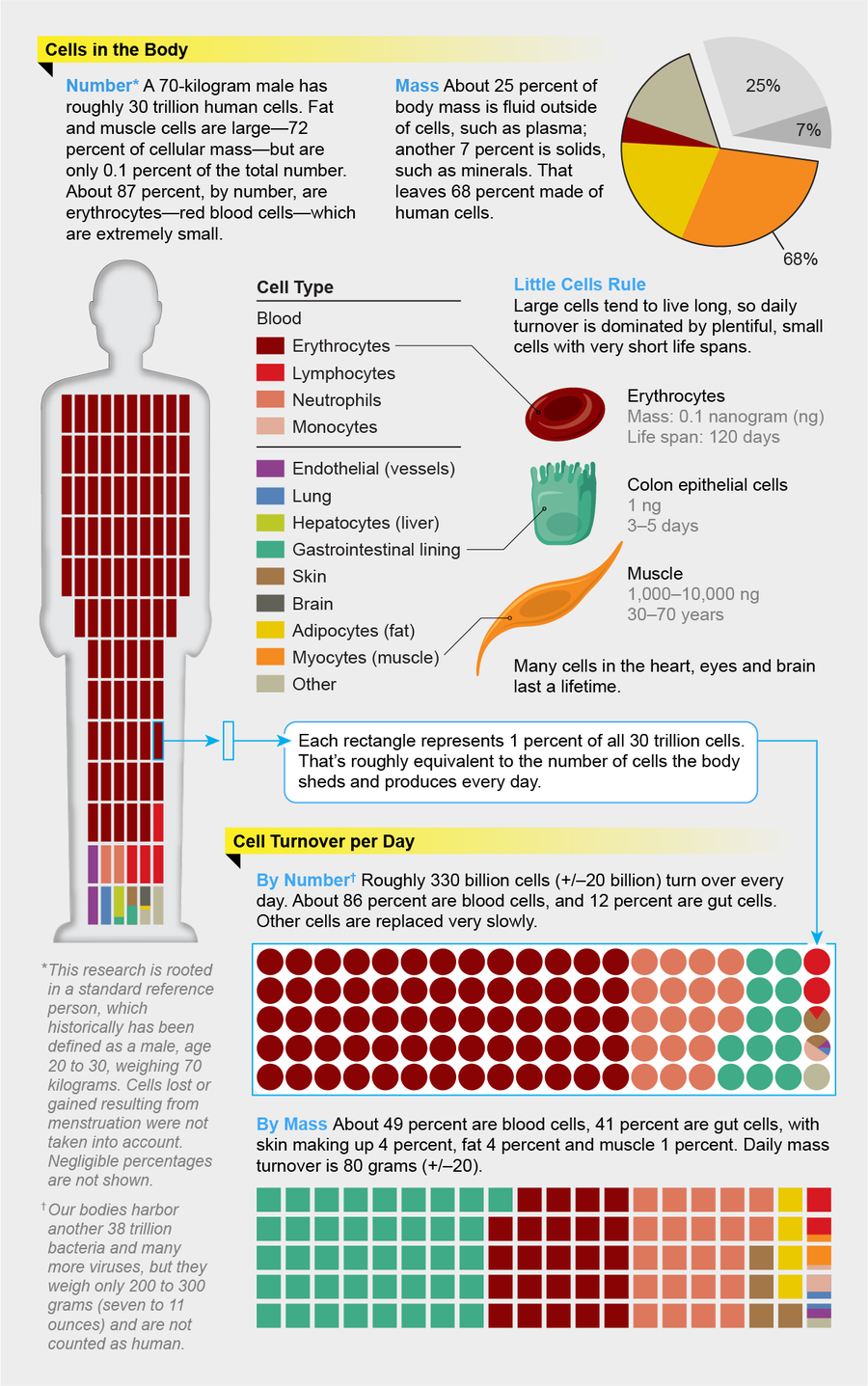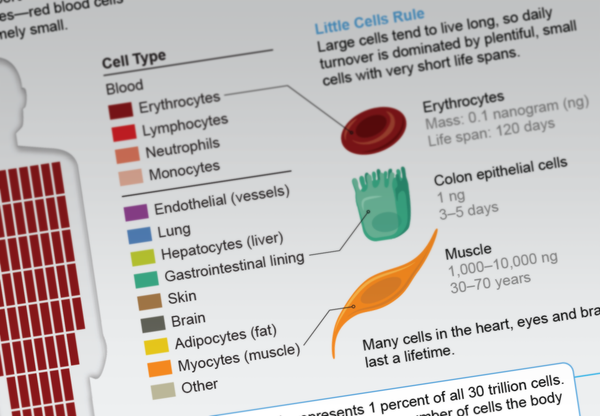On supporting science journalism
If you're enjoying this article, consider supporting our award-winning journalism by subscribing. By purchasing a subscription you are helping to ensure the future of impactful stories about the discoveries and ideas shaping our world today.
The human body replaces its own cells regularly. Scientists at the Weizmann Institute of Science in Rehovot, Israel, have finally pinned down the speed and extent of this “turnover.” About a third of our body mass is fluid outside of our cells, such as plasma, plus solids, such as the calcium scaffolding of bones. The remaining two thirds is made up of roughly 30 trillion human cells. About 72 percent of those, by mass, are fat and muscle, which last an average of 12 to 50 years, respectively. But we have far more, tiny cells in our blood, which live only three to 120 days, and lining our gut, which typically live less than a week. Those two groups therefore make up the giant majority of the turnover. About 330 billion cells are replaced daily, equivalent to about 1 percent of all our cells. In 80 to 100 days, 30 trillion will have replenished—the equivalent of a new you.

Credit: Jen Christiansen; Sources: “Revised Estimates for the Number of Human and Bacteria Cells in the Body,” by Ron Sender, Shai Fuchs and Ron Milo, in PLOS Biology, Vol. 14; August 2016 (total cell data), and “The Distribution of Cellular Turnover in the Human Body,” by Ron Sender and Ron Milo, in Nature Medicine, Vol. 27; January 2021 (cell turnover data)
